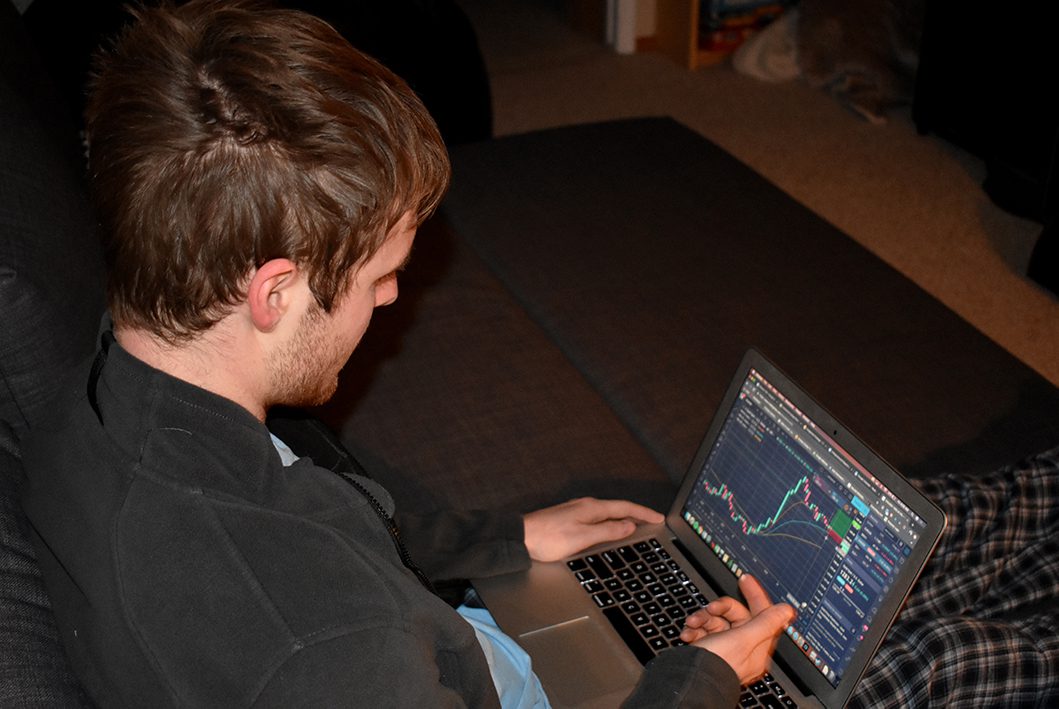The futures market is unpredictable for some. In search of lucrative trends, traders track an endless supply of signals and alerts that barrage their devices during the day, often to no avail. To stay ahead of the curve, some invest in the middle of the night in an attempt to make money while the rest of the city sleeps.
Eric Bradshaw is a 21-year-old Toronto trader who has been riding the rollercoaster of international exchanges for three years. He invests his money in the S&P 500 index, an international market index, as well as currency exchanges, gold and oil. Unlike most stock exchanges, futures markets are open 24 hours Monday to Saturday, and until 5 p.m. on Sunday.
He says he trades to earn extra money while attending University of Ontario Institute of Technology, where he’s working on a degree in finance.
At 4 a.m., Bradshaw checks up on his portfolio on thinkorswim, an electronic trading platform by TD Ameritrade geared for self-directed traders like him. He says the value of his investments has grown 600 per cent growth while he traded with eight per cent risk per transaction in 2019.
“The best part about being up at 4 a.m. would be those (spreads) tend to be the lowest volatility setups that you find, just because it’s during the night and isn’t the New York session,” he said. “You get more bang for your buck. You can size your risk to be smaller so it takes less moves per day to make money.”
(Story continues below)

“You get more bang for your buck. You can size your risk to be smaller so it takes less moves per day to make money.”
-Eric Bradshaw
While Bradshaw’s short career has proven most lucrative trading at eight per cent risk, he has since minimized his loss potential, now investing at a one-per-cent risk to his portfolio per trade. Since the least amount of volatility occurs in the middle of the night, Bradshaw can make a quick dollar without the risk of “blowing up” his account, which is more likely to happen during the day, he says.
However, Bradshaw says it can be mentally and physically taxing to try to conquer the futures markets before the crack of dawn.
“I’m usually not at my maximum potential for the day. I’m pretty tired, groggy, not thinking clearly,” Bradshaw admitted. “I mitigate that by having a fully mechanical system so that I don’t have to think about the setup that I take.”
Bradshaw’s system is partially automated in order to track trends, but he doesn’t leave his transactions to chance. If a particular signal meets his criteria, he will either buy, short (bet against a stock) or sell the future himself. Following a strict trading regimen is one of the many things Bradshaw has learned from working a high-risk job at 4 a.m.
“Being awake at 4 a.m. has taught me that you want to be doing certain activities at times that most people aren’t,” Bradshaw said. “During those times there’s less competition, which sometimes gives you an advantage…compared to doing activities at regular hours.”
Check out more Toronto at 4 a.m. content here!
Online: Toronto Observer
Instagram: @6ix_at_4
Twitter: @6ix_at_4
Facebook: @6ixat4

